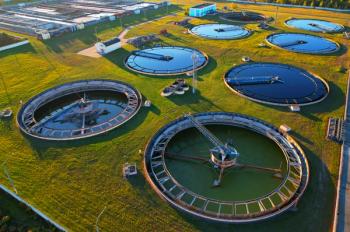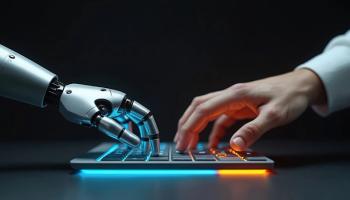
LCGC TV: Hyphenated Techniques
LCGC TV: Luigi Mondello on the Potential of Mass Spectrometry to Replace Chromatography
In this video from LCGC TV, Luigi Mondello from the University of Messina in Italy reveals his views on the prospect of mass spectrometry eliminating the need for chromatographic separations in the future.
LCGC TV: Rudolf Krska on Mycotoxin Analysis Using LC–MS–MS
Mycotoxins are an important group of secondary metabolites produced by fungi that can cause disease in humans and animals. Rudolf Krska from BOKU, IFA-Tulln, in Vienna, Austria, describes why he uses LC–MS–MS in his analysis of mycotoxins and offers advice to separation scientists thinking about using the technique in their research.
LCGC TV: Metabolic Fingerprinting Using GC–MS
In this new video from LCGC TV, Christian Wachsmuth from the University of Regensburg in Germany compares the performance of different ionization methods for GC–MS in metabolic fingerprinting. He also goes on to talk about how GC–MS could be applied in a clinical setting and what developments are needed for this to happen.
LCGC TV: Kevin Schug on Estrogen Analysis using 2D LC–MS–MS
Estrogen is implicated in numerous regulatory roles in the human body, and even when present at low concentrations it can have a big effect on physiological processes. Kevin Schug from the University of Texas Arlington, USA, gives the main factors to consider when analyzing different types of biological fluids and gives his advice for scientists who want to begin using 2D LC–MS–MS.
LCGC TV: Rudolf Krska on Mycotoxin Analysis Using LC–MS–MS
Mycotoxins are an important group of secondary metabolites produced by fungi that can cause disease in humans and animals. Rudolf Krska from BOKU, IFA-Tulln, in Vienna, Austria, describes why he uses LC–MS–MS in his analysis of mycotoxins and offers advice to separation scientists thinking about using the technique in their research.
LCGC
TV: Gérard Hopfgartner on Advances in Ion Mobility Mass Spectrometry
Performing liquid chromatography–mass spectrometry (LC–MS) analysis on tissue samples requires sample homogenization, which destroys the sample and loses its spatial resolution. Gérard Hopfgartner from the University of Geneva, University of Lausanne, Switzerland, presents an alternative method coupling liquid extraction surface analysis with modifier-assisted differential ion mobility spectrometry, describes other application areas, and gives his opinion on whether this is the beginning of the end for chromatography.
LCGC TV: Giorgia Greco on HILIC–MS
HILIC was introduced more than 50 years ago but has attracted more attention recently. Giorgia Greco from the Technische Universität Munchen in Germany discusses the different options available for combining HILIC to reversed-phase LC, and how HILIC can be hyphenated with atmospheric pressure chemical ionization MS.
LCGC TV
: Christian Wachsmuth on Metabolic Fingerprinting Using GC–MS
In this new video from LCGC TV, Christian Wachsmuth from the University of Regensburg in Germany, discusses how the field of metabolic fingerprinting has developed over time, and talks about why gas chromatography–mass spectrometry (GC–MS) is the ideal method for metabolic fingerprinting.
LCGC TV: Giorgia Greco on HILIC–MS
HILIC was introduced more than 50 years ago but has attracted more attention recently. Giorgia Greco from the Technische Universität Munchen in Germany discusses how the principles of HILIC differ from those of reversed-phase HPLC and how HILIC as a technique has evolved over time.
LCGC TV: Rudolf Krska on Mycotoxin Analysis with LC–MS
Mycotoxins are an important group of secondary metabolites produced by fungi that can cause disease in humans and animals. Active in the field of mycotoxin analysis is Rudolf Krska from BOKU, IFA-Tulln in Vienna and in this video he discusses his work investigating the human metabolism of Fusarium mycotoxins and gives his view on the future direction of mycotoxin research.
LCGC TV: Advances in Ion Mobility Mass Spectrometry
In the first video update to LCGC TV of 2015, Gérard Hopfgartner from the University of Geneva, University of Lausanne, Switzerland, discusses the advances in ion mobility mass spectrometry, highlighting the benefits of the technique and how it can be hyphenated to both 1D and 2D LC.
LCGC TV: Michal HolÄapek on Trends in LC–MS
In this new video, Michal HolÄapek from the University of Pardubice in the Czech Republic discusses the surprising advantages of LC–MALDI coupling and gives reasons why ion mobility mass spectrometry is gaining more attention.
LCGC TV: Michal HolÄapek on Trends in LC–MS
In this new video from LCGC TV, Michal HolÄapek from the University of Pardubice in the Czech Republic describes the requirements of "fast LC–MS" and areas where the technique can be applied in industry.
LCGC TV: Eliminating Matrix Effects: LC–MS Analysis of Biological Fluids
Frederic Lynen of Ghent University in Belgium discusses why LC–MS is the ideal analytical tool for the quantitative analysis of analytes in biological samples, and presents a new HILIC-based SPE approach to improve analyte recovery and sensitivity by removing phospholipids from samples.
LCGC TV: Michal HolÄapek on Trends in LC–MS
More and more analysts are moving away from low-resolution mass spectrometry to high-resolution mass spectrometry, but what are the requirements for making such a change? Michal HolÄapek, professor of analytical chemistry at the University of Pardubice, Czech Republic, discusses what you need to consider when switching to a high resolution system. HolÄapek also offers advice on how to choose the most effective ionization technique for your analysis.
LCGC TV: Koen Sandra on Analyzing Protein Biopharmaceuticals Using LC–MS
By 2020, more than 50% of approved drugs are expected to be protein biopharmaceuticals. Koen Sandra from the Research Institute for Chromatography in Belgium discusses the challenges of characterizing protein biopharmaceuticals and why LC–MS is now indispensable for characterizing this class of drugs.
Newsletter
Join the global community of analytical scientists who trust LCGC for insights on the latest techniques, trends, and expert solutions in chromatography.





